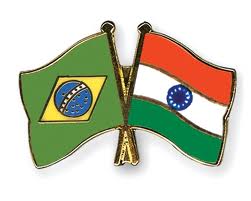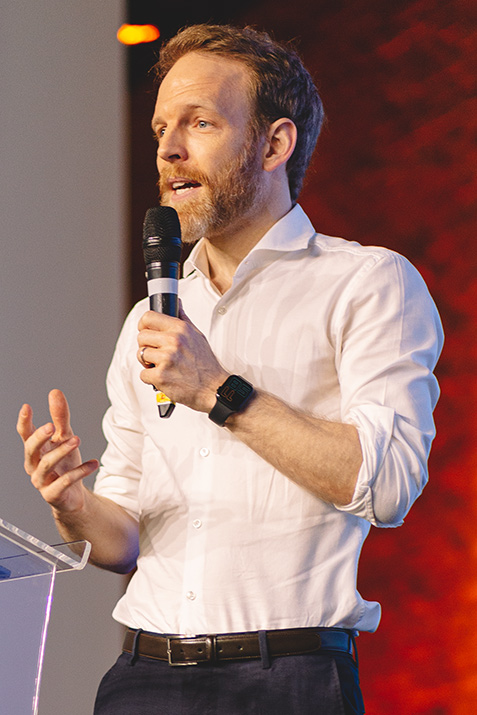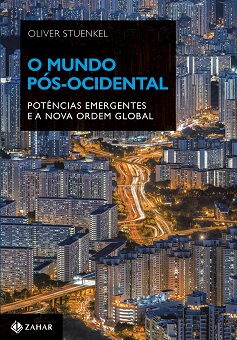Finding an Indian in São Paulo, Latin America’s largest metropolitan area with approximately 20 million inhabitants, is  no easy task. While having dinner at the Indian restaurant around the corner is common in New York, London or Cape Town, Indian cuisine is largely unknown to Brazilian palates, and Indian restaurants a rarity. Considering the vast size and global distribution of the Indian diaspora, and both countries’ growing economic clout, this is nothing short of astonishing. Conversely, the chance of running into a Brazilian in Mumbai is virtually zero, and inviting a traditional Hindu to a Brazilian churrascaria is unlikely to strengthen the Brazilian-Indian friendship. On top of that, soccer, Brazil’s national obsession, is, with exception of West Bengal, a marginal sport in India. Considering all these obstacles, do Indian-Brazilian relations have any chance of turning into something serious?
no easy task. While having dinner at the Indian restaurant around the corner is common in New York, London or Cape Town, Indian cuisine is largely unknown to Brazilian palates, and Indian restaurants a rarity. Considering the vast size and global distribution of the Indian diaspora, and both countries’ growing economic clout, this is nothing short of astonishing. Conversely, the chance of running into a Brazilian in Mumbai is virtually zero, and inviting a traditional Hindu to a Brazilian churrascaria is unlikely to strengthen the Brazilian-Indian friendship. On top of that, soccer, Brazil’s national obsession, is, with exception of West Bengal, a marginal sport in India. Considering all these obstacles, do Indian-Brazilian relations have any chance of turning into something serious?
If presidential rhetoric is any indicator, the answer is yes. Relations seemed to have strengthened considerably since Lula took office in 2003, having diversified into several areas such as trade, scientific and cultural cooperation, and attmpts to institutionalize the alliance in the form of IBSA (with South Africa) and BRIC (with China and Russia). That is considerable given that during the Cold War, relations between the two countries rarely went beyond the multilateralencounters in the UN General Assembly, especially in the context of the G77. In 2003, Indian External Affairs Minister Sinha was the first Indian Foreign Affairs ever to visit Brazil. Brazil’s President Lula has been to India three times, and India’s Manmohan Singh has been the first Indian Prime Minister to visit Brazil in almost four decades. In 2004, an India-Mercosur trade agreement was signed, and both countries have ambitious goals to boost trade, which is still insignificant.
Yet, despite the recent presidential love affair between Brazil and India, doubts remain about whether ties can be strengthened. The trade agreement sounds great, but is limited to a list of merely 900 products. The agreement excludes virtually all key industries such as textiles, clothing, agricultural products, cars and car parts, raising the question of whether stronger economic ties are viable politically. While Brazil’s agricultural sector is now the most competitive in the world and avidly seeks to reach foreign markets, India lags behind, and a good part of India’s 300 million people who live in poverty is employed in the highly inefficient agricultural sector.
Yet in theory, Brazil’s expertise and India’s necessity to boost its agricultural sector to combat poverty effectively offers great opportunities for a knowledge and technology transfer. The same is true for India’s expertise in software, an area where Brazil needs to catch up.
Finally, both countries could potentially learn a lot from each other with regards to basic education, social inclusion, infrastructure and poverty, where both face formidable challenges. While the percentage of poor Indians is higher than in the other emerging powers, World Bank data suggests that one in five Brazilians, or 40 million, live under the poverty line, showing that Brazil still has, like India, a long way to go. The Brazilian government’s exemplary campaign against HIV/ AIDS has been avidly studied by Indian policy makers, and both countries decided to break the patents of several AIDS drugs and produce cheaper generic drugs for the masses.
With regards to international politics, recent euphoria may be premature. Yes, both India and Brazil seek a permanent seat on the UN Security Council and have often jointly called for the democratization of global governance in this regard. The same is true for both countries’ call for expanding the G8. Brazil and India seemed similarly in sync when leading the developing world during the legendary WTO negotiations 2003 in Cancun, which ended without agreement. While these similarities are meaningul, they cannot hide the fact that there is a lot of disagreement between Brazil and India, which may well cause ties to turn sour. Their position as rising and relatively unestablished powers is indeed similar and allows Brazil’s and India’s leaders to make bold joint statements on vague matters such as global governance. But in areas such as nuclear non-proliferation, both countries’ position has been squarely opposed, and Brazil has been highly critical of the U.S.-India nuclear deal in 2005, which largely legitimized India as a nuclear power. Brazilians rightly argued that the United States rewarded India for refusing to sign the NPT, while Brazil had decided to refrain from nuclear weapons in 1990.
With regards to climate change, India and Brazil are fairly aligned, but their positions are bound to diverge drastically once Brazil realizes its potential to turn into a global leader in climate change policy. With a Green Party candidate running for President, and a hydropower making up the bulk of its source of electricity, Brazil stands in stark contrast to India, where environmental consciousness is reduced and tough environmental legislation politically unviable.
It is no surprise that ties between such large, diverse and complex countries are a mixed bag. Yet there is one main reason why both countries are well-advised to invest in their friendship. India, soon the most populous country on earth, is bound to become the third largest economy on earth in the next decades, behind China and the United States. Brazil won’t make it on the podium during the 21st century, but even as the fourth or fifth largest economy on earth, its economic and political ties to India are sure to be of unprecedented scale and intensity. By then, the number of decent Indian restaurants in São Paulo will have hopefully shot through the roof.
Photo credit: Crossed Flag Pins








